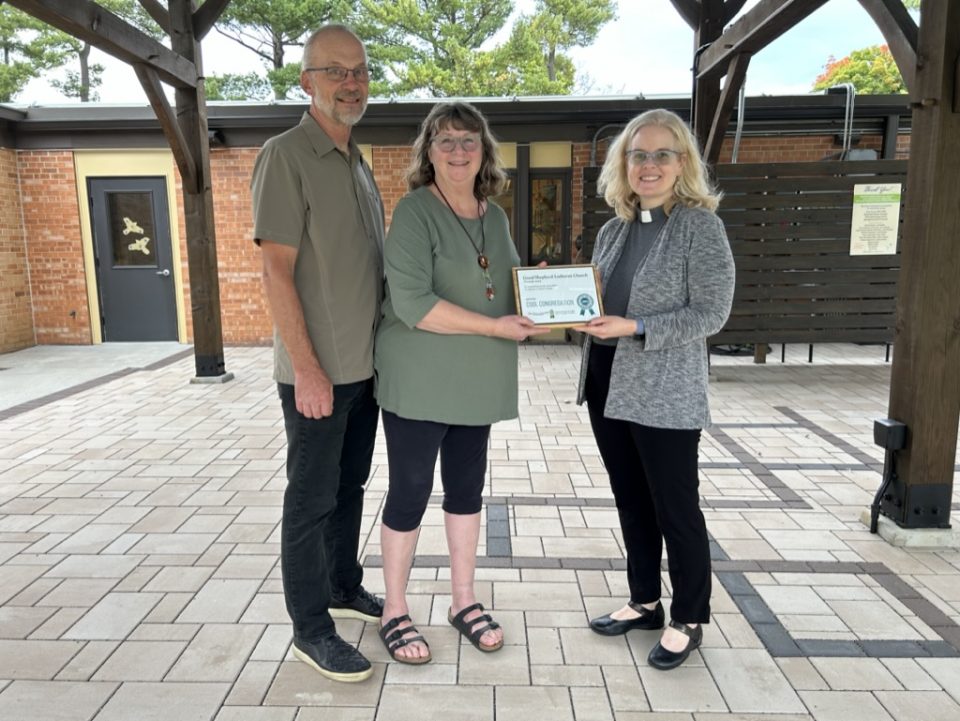In 1958, Good Shepherd Lutheran Church was erected on pastureland in Decorah, Iowa. Like most buildings from that era, it was heated with fuel oil. During the 1960s, the congregation switched to natural gas, burying the church’s 2,000-gallon fuel-oil drum in the yard and installing downdraft, forced-air furnaces.
By the 2010s, times had changed drastically. Climate change had intensified Iowa’s blistering summer heat and brutal winter cold, and the church’s heating and air-conditioning system couldn’t keep up, costing the congregation in higher energy bills. Good Shepherd began making incremental changes to improve its energy efficiency—weatherstripping doors, transitioning to LED lighting and adding a few solar panels to its roof. But the congregation wanted to do more.
Congregants Jim and Liz Fritz, both retired teachers, knew how the congregation could upgrade the HVAC system and reduce the building’s carbon footprint at the same time. They reached out to the Winneshiek Energy District, where a former student, Joel Zook, worked at the time. Modeled on the Soil and Water Conservation District movement of the 1930s and ’40s, the new energy district initiative helps local communities transition to clean energy sources such as solar and wind power.
“They brought me up to speed on geothermal heat pumps and VRF, or variable refrigerant flow, which basically means you use copper lines instead of ductwork,” Jim said. He and Liz had some general contracting experience from flipping houses, so they decided to lead this project for Good Shepherd.
In 2019 the Fritzes launched Mission Green LLC, which would allow them to purchase and install solar panels for Good Shepherd at a reduced rate. (Only with the Inflation Reduction Act of 2022 were nonprofits such as churches granted tax credits for solar-power installation.) The congregation invested in four ground-source heat pumps and four geothermal heat pumps, which would run on solar power and use VRF to feed individual units throughout the building.
“The heat pumps are 350% efficient,” Jim said, “because they don’t burn something to make heat—they move heat just like your refrigerator does, only the opposite. And now every room is individually zoned, so you can have whatever temperature you want—you could have heat in one room and air-conditioning in the other, and it all operates through the same system.”
The team excavated and disposed of the old fuel-oil tank and installed a French drain—a trench filled with gravel that redirects surface water—to eliminate flooding in the area. Then they laid a permeable paver courtyard, topped with a large wooden pergola and a canopy of solar panels. The canopy generated 48 kilowatts of solar power, as well as shelter from the elements for outdoor activities.
“The whole thing is watertight underneath, so it will be used for outdoor fellowship,” Jim said. “It can be weddings, graduations, community events, whatever—it’s a new outdoor space directly adjacent to our building.”
Though the congregation made a front-end investment, the new power and HVAC system has already significantly reduced its energy costs, with monthly energy bills as low as $24 for the entire building and an annual savings of about $8,000. The system also prevents 25 tons of carbon emissions annually.
The initiative earned Good Shepherd the 2024 Energy Saver award from Interfaith Power and Light’s “Cool Congregations” challenge, which recognizes congregations working to improve sustainability and protect the earth and its resources.
In a few years, the Fritzes will turn over their lease to the congregation at a depreciated fair-market value. Some people have asked them to replicate the project in other locations, they said, but they plan to take a more passive role going forward.
“What we hope to do is continue advocating and educating people and showing others that this type of project can be done,” Liz said. “We are just a small rural congregation, so we are a good example that it is possible to do this in other places.”
They hope that Good Shepherd’s example will inspire others to take similar action in their communities, with many small projects coming together to make a much larger impact on the environment.
“We’re just trying to move the needle,” Jim said. “We know we can’t turn the whole ship, but maybe we can make an incremental change. And if enough of us do it, we might be able to bootstrap this thing.”





